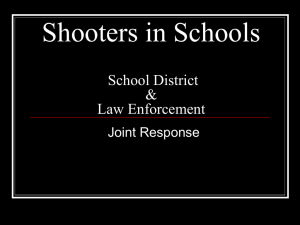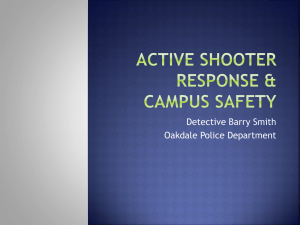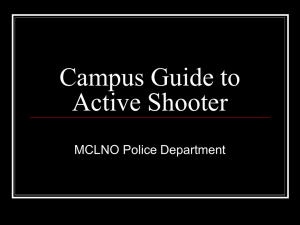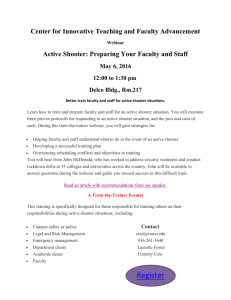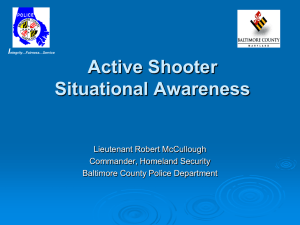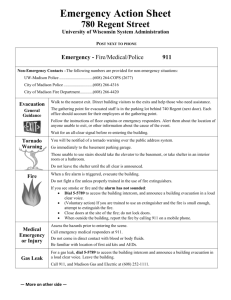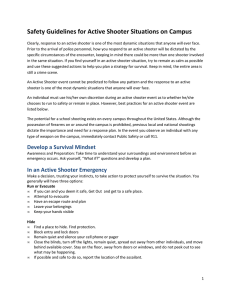Document 12886385
advertisement
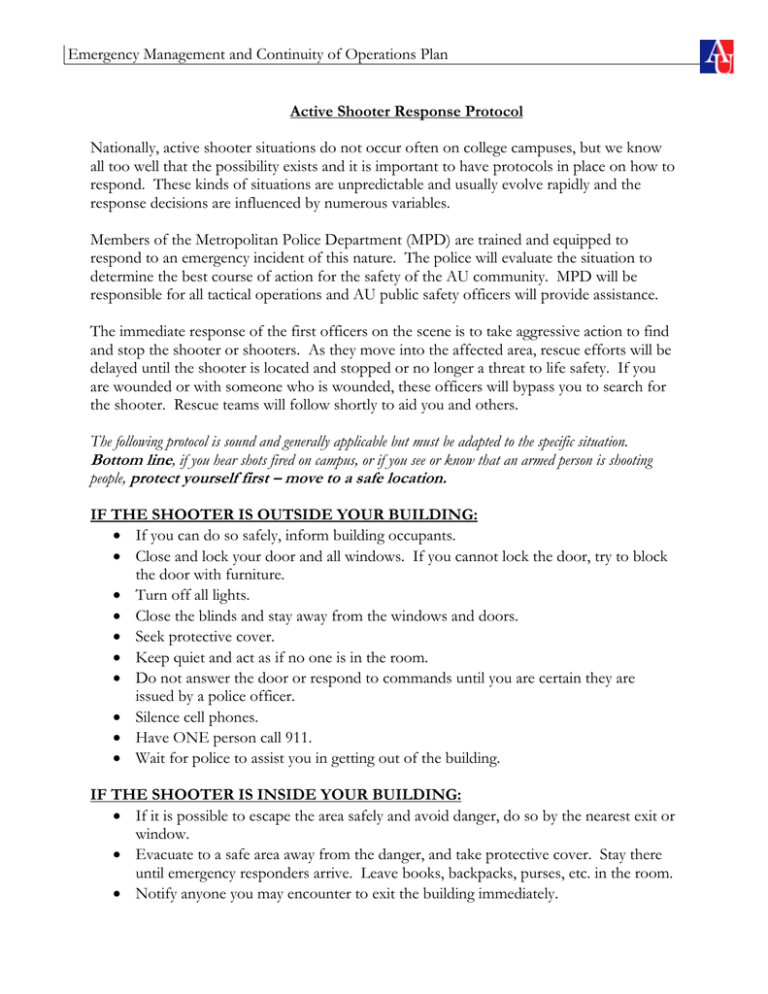
Emergency Management and Continuity of Operations Plan Active Shooter Response Protocol Nationally, active shooter situations do not occur often on college campuses, but we know all too well that the possibility exists and it is important to have protocols in place on how to respond. These kinds of situations are unpredictable and usually evolve rapidly and the response decisions are influenced by numerous variables. Members of the Metropolitan Police Department (MPD) are trained and equipped to respond to an emergency incident of this nature. The police will evaluate the situation to determine the best course of action for the safety of the AU community. MPD will be responsible for all tactical operations and AU public safety officers will provide assistance. The immediate response of the first officers on the scene is to take aggressive action to find and stop the shooter or shooters. As they move into the affected area, rescue efforts will be delayed until the shooter is located and stopped or no longer a threat to life safety. If you are wounded or with someone who is wounded, these officers will bypass you to search for the shooter. Rescue teams will follow shortly to aid you and others. The following protocol is sound and generally applicable but must be adapted to the specific situation. Bottom line, if you hear shots fired on campus, or if you see or know that an armed person is shooting people, protect yourself first – move to a safe location. IF THE SHOOTER IS OUTSIDE YOUR BUILDING: If you can do so safely, inform building occupants. Close and lock your door and all windows. If you cannot lock the door, try to block the door with furniture. Turn off all lights. Close the blinds and stay away from the windows and doors. Seek protective cover. Keep quiet and act as if no one is in the room. Do not answer the door or respond to commands until you are certain they are issued by a police officer. Silence cell phones. Have ONE person call 911. Wait for police to assist you in getting out of the building. IF THE SHOOTER IS INSIDE YOUR BUILDING: If it is possible to escape the area safely and avoid danger, do so by the nearest exit or window. Evacuate to a safe area away from the danger, and take protective cover. Stay there until emergency responders arrive. Leave books, backpacks, purses, etc. in the room. Notify anyone you may encounter to exit the building immediately. Emergency Management and Continuity of Operations Plan As you exit the building, keep your hands above your head and listen for instructions that may be given by police officers. If an officer points a firearm at you, make no movement that may cause the officer to mistake you actions for a threat. Try to stay calm. If you get out of the building and do not see a police officer, call 911 and American University public safety at x3636, or use a Blue Light phone and provide the dispatcher with the following information: a. Your name b. Location of the incident c. Number of shooters, if known d. Identification or description of shooter(s) e. Number of persons who may be involved f. Your exact location g. Injuries to anyone, if known If you are unable to escape the building, move out of the hallway and into an office or classroom and try to lock the door. If the door will not lock, try barricading the door with desks and chairs. Lie on the floor and/or under a desk and remain silent. Silence cell phones. If possible, place signs in exterior windows to identify the location of injured persons. Wait for the police to come and find you. IF THE SHOOTER ENTERS YOUR OFFICE OR CLASSROOM: There is no set procedure in this situation. If possible call 911 or x3636 and talk with a police dispatcher. If you cannot speak, leave the phone line open so the police can hear what is going on. Use common sense. If you are hiding and flight is impossible, attempts to negotiate with the suspect may be successful. Playing dead may also be a consideration. Attempting to overcome the suspect with force is a last resort that should only be considered in the most extreme circumstances. Only you can decide if this is something you should do. If the shooter exits your area and you are able to escape, leave the area immediately. Do not touch anything in the area and remember to be alert for responding police officers who may mistake you as the shooter.
